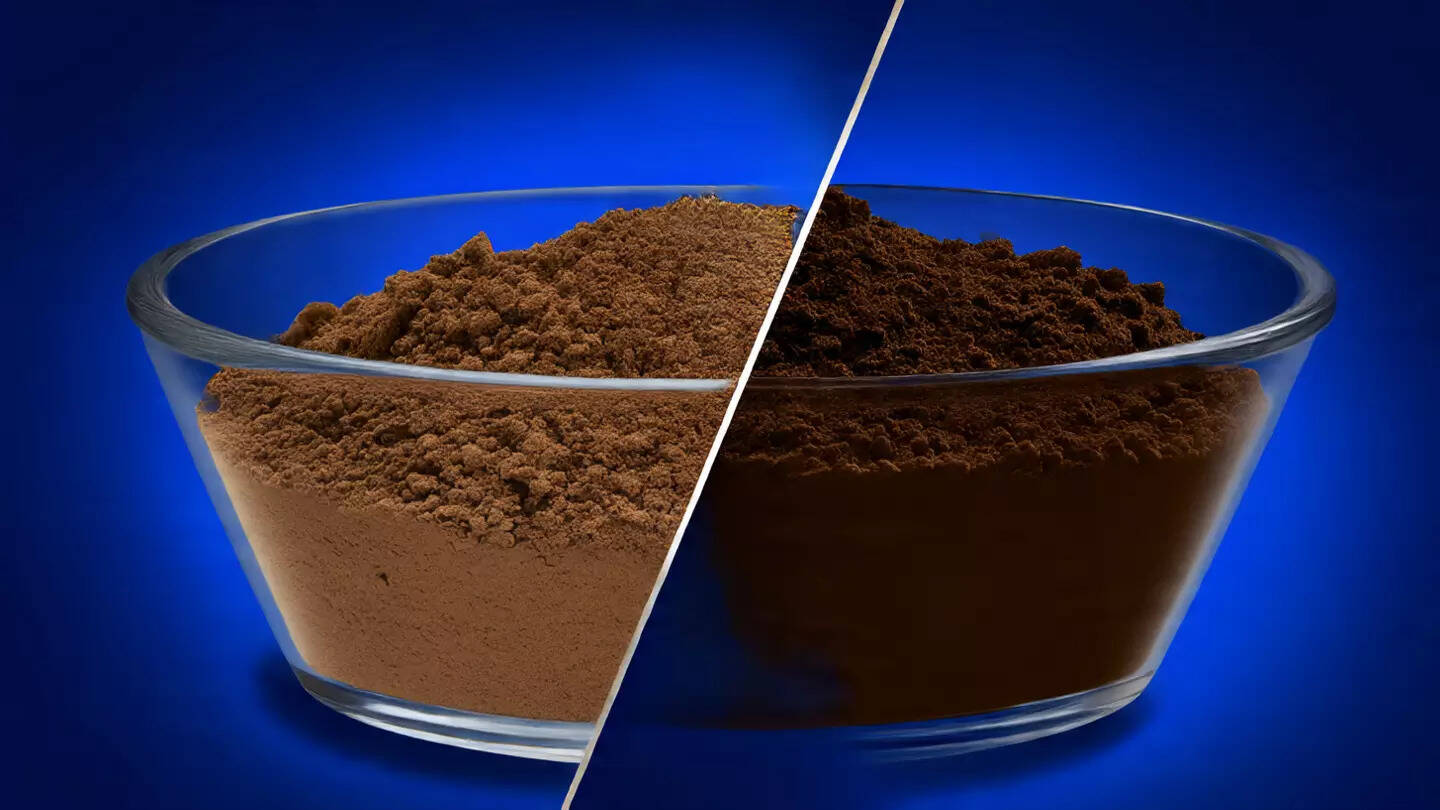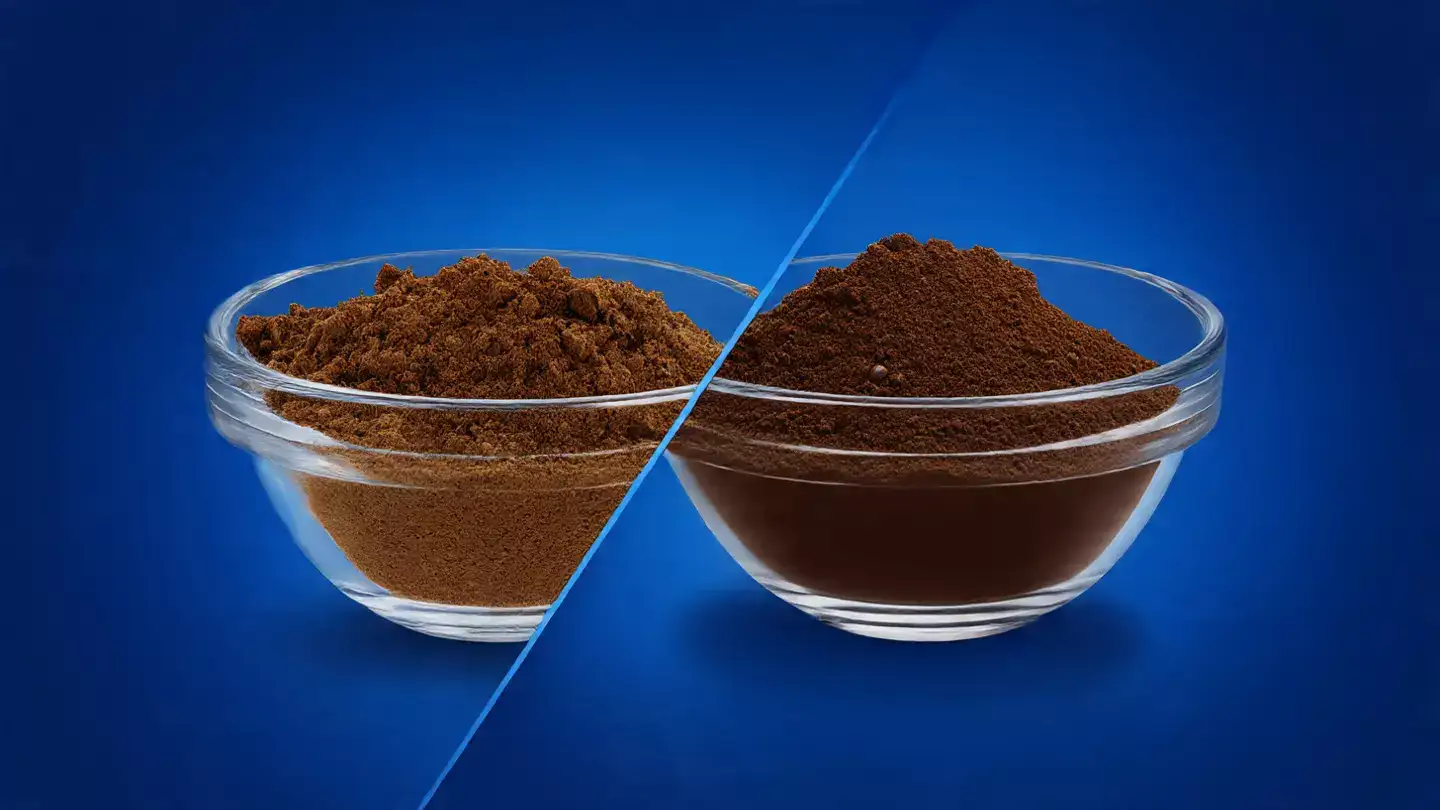How To Identify Fake Coffee Powder; Simple Tricks Every Coffee Lover Should Know
In today’s fast-growing coffee market, the love for a perfect cup of coffee has led to a surge in demand for authentic, high-quality beans and powders. However, this popularity has also opened the door for counterfeit and adulterated coffee products. Many coffee powders available in the market are mixed with impurities such as chicory, tamarind seed powder, or even artificial colouring and starch. Consuming such fake coffee not only ruins the taste but can also affect your health in the long run. Understanding how to identify fake coffee powder can help you make smarter, safer, and more satisfying choices every morning.
 Image Courtesy: Meta AI
Image Courtesy: Meta AI
The love for coffee should never be compromised by counterfeit products. With a little attention and awareness, you can easily spot fake coffee powder and make informed decisions about what you drink. By performing simple home tests, buying from reputable sources, and understanding the signs of adulteration, you can enjoy every cup of coffee with confidence and authenticity. Genuine coffee not only delights your taste buds but also provides real energy, aroma, and satisfaction — the true essence of a perfect brew.

Why Fake Coffee Exists
Fake or adulterated coffee powder is often produced to cut costs and increase profit margins. Genuine coffee beans are expensive to source, roast, and grind, while substitutes such as chicory, date seeds, maize powder, and other fillers are much cheaper. These imitations mimic the appearance and sometimes even the aroma of coffee, making them difficult to identify at first glance. Some unscrupulous sellers also add artificial colours or flavouring agents to make the powder seem more authentic. This deception not only cheats consumers financially but also compromises the integrity of the coffee experience.Common Adulterants in Fake Coffee
Before learning how to recognise fake coffee, it’s useful to understand what it’s often mixed with. The most common adulterants include chicory, which gives a similar bitterness but a thicker texture; tamarind seed powder, which adds volume; and starch or glucose, which increase weight. In some cases, burnt sugar or caramel colouring is used to make the powder appear darker and richer. Such substances alter both the flavour and aroma of genuine coffee. While chicory in small amounts is acceptable in certain coffee blends, excessive amounts or other non-coffee ingredients are clear indicators of adulteration.
Simple Tests to Detect Fake Coffee Powder at Home
Fortunately, there are a few simple and effective tests you can perform at home to determine whether your coffee powder is pure or mixed with unwanted fillers.1. The Water Test
Take a glass of water and gently sprinkle some coffee powder on the surface. Pure coffee will float for a while before slowly sinking, leaving a natural brownish tint in the water. If the powder quickly sinks or dissolves, it may contain chicory or other additives that absorb water faster.You may also like
- 3 fatty liver diet changes: Award-winning doctor lists foods to completely avoid
- Andhra releases Rs 90 crores for honorarium to imams, muezzins
- Operation Bullion Blaze: DRI disrupts major gold smuggling, melting syndicate in Mumbai; 11.88 kg gold seized and 11 held
- Malaysia introduces new overstay fines for employment and dependent pass holders
- SC orders Haryana police to release lawyer arrested over links to crime committed by clients
2. The Pinch Test
Take a small pinch of coffee powder between your fingers and rub it. Pure coffee feels dry and coarse, while adulterated coffee feels sticky or oily because of the presence of chicory, glucose, or artificial colourants.3. Smell and Taste Test
Genuine coffee has a strong, rich, and slightly bitter aroma. Fake coffee may smell excessively sweet, burnt, or chemical-like due to added flavouring agents. When brewed, pure coffee leaves a clean, slightly acidic taste, whereas fake coffee tastes unusually bitter, earthy, or flat.4. Paper Filter Test
Place a teaspoon of coffee powder on a white filter paper or tissue and add a few drops of water. If a dark brown ring appears around the powder, it’s likely adulterated with chicory or caramel. Pure coffee, on the other hand, will leave a light brown mark without spreading.Health Effects of Consuming Fake Coffee
Drinking adulterated coffee regularly can have negative effects on health. Substances such as chicory or tamarind seed powder can cause digestive discomfort, acidity, or allergic reactions in some people. Artificial colouring or starch may also lead to stomach issues and reduced nutrient absorption. Moreover, fake coffee often lacks the antioxidants, caffeine balance, and beneficial compounds found in real coffee beans, reducing its energising and health-boosting properties.Tips to Buy Genuine Coffee Powder
To ensure you’re purchasing real coffee, always buy from trusted brands or certified sellers. Look for FSSAI, ISO, or other quality certifications on the packaging. Check the manufacturing and expiry dates, as expired coffee often loses its aroma and may be more prone to adulteration. Opt for freshly ground coffee beans if possible — buying whole beans and grinding them at home is one of the best ways to guarantee purity and freshness. Avoid unusually cheap products or unlabelled pouches sold online or in local markets.The love for coffee should never be compromised by counterfeit products. With a little attention and awareness, you can easily spot fake coffee powder and make informed decisions about what you drink. By performing simple home tests, buying from reputable sources, and understanding the signs of adulteration, you can enjoy every cup of coffee with confidence and authenticity. Genuine coffee not only delights your taste buds but also provides real energy, aroma, and satisfaction — the true essence of a perfect brew.









